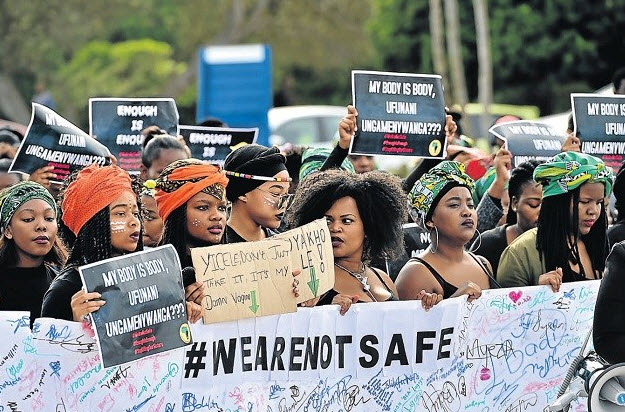‘Feminism’ has often been seen as a Western concept, but African women are increasingly redefining it to suit their own purposes. This, in turn, is influencing the rest of the world.
By Aili Mari Tripp
 Today, on International Women’s Day 2013, one is likely to hear a raft of statistics that both celebrate and lament the status of women. While some indicators of gender equality have improved, others continue to shock and disappoint. And drawing firm conclusions using these different, discrete areas can often prove a troublesome task. How, for example, should news that South African women hold 40% of the country’s parliamentary seats be balanced against reports that in Gauteng province 1 in 4 have been raped?
Today, on International Women’s Day 2013, one is likely to hear a raft of statistics that both celebrate and lament the status of women. While some indicators of gender equality have improved, others continue to shock and disappoint. And drawing firm conclusions using these different, discrete areas can often prove a troublesome task. How, for example, should news that South African women hold 40% of the country’s parliamentary seats be balanced against reports that in Gauteng province 1 in 4 have been raped?
However, in this context, the more significant contributions that African women’s movements have made globally often go unnoticed. Far from following a trajectory that seeks to ‘catch up’ with Western feminism, several African countries and social groups have forged their own conceptions of equality and provided models for the rest of the world to follow.
Trajectories of change
Women’s movements in Africa have come a long way over the past half century or so. In the first three decades after independence, women’s organisations were often tied to the patronage politics of the single-party state and tended to focus on welfare, domestic and developmental concerns whilst avoiding political engagement. At the grassroots level, women’s groups produced handicrafts, promoted literacy, farmed, engaged in income-generating projects, and engaged in cultural activities.
This began to change in the 1990s as women’s movements were increasingly influenced by international women’s rights agendas as well as by the United Nations, African Union, Southern African Development Community and other sub-regional organisations. The 1985 UN Conference on Women held in Nairobi and especially the 1995 UN Conference on Women in Beijing served as catalysts for many organisations and activists. International donors, weary of state corruption and waste, began to shift resources towards non-governmental organisations, including women’s associations.
At the same time, women activists became involved in democratisation movements, which, in turn, opened up political space for women’s mobilisation. One-party systems gave way to multiparty systems; military dictatorships dissolved into civilian rule; freedom of press, association and assembly expanded. The decline of conflict in Africa, especially after 2000, further sped up the push for women’s rights, especially in post-conflict countries.
With time, women’s organisations became increasingly independent of government and the dominant political party. Women activists began to acquire their own resources, select their own leaders, and forge their own agendas. New women’s networks and conferences organised around violence against women, peace, the environment, and reproductive rights. They started taking on some of the most challenging issues relating to domestic violence, inheritance rights, female genital cutting, child marriage and other issues relating to customary law. More recently, there has been increased support for the rights of gays and lesbians as human rights, and more awareness around abortion and other contentious issues.
Although the older welfare-oriented and developmental agendas persist to this day, a new emphasis on political participation and advocacy has emerged. New women’s organisations formed to improve leadership skills, encourage women’s political involvement, promote women’s political leadership, press for legislative changes, and conduct civic education.
African feminism
On the one hand, some of the successes of African women’s movements can be attributed to the roles played by international organisations in catalysing change, providing broad spaces for debate and action, and offering examples for African nations and campaigners to emulate.
But on the other hand, African organisations can be seen to have taken unique and novel approaches to campaigning for female empowerment in ways that have influenced the rest of the world. In Africa, the term “feminism” has often carried with it the baggage of being regarded as a Western and foreign construct. However, this is rapidly changing as feminism itself has been increasingly redefined by women leaders in Africa to suit their own purposes. While some of these women’s rights agendas have been inspired by international feminisms, African women are themselves contributing significantly to global understandings and implementation of women’s rights as we see in the struggles over quotas and constitutional reform.
When they came to the 1980 World Conference on Women in Copenhagen, for example, African women representatives were prepared with draft policy proposals regarding development. As Devaki Jain explained in Women, Development and the UN, “African women were several steps ahead of the rest of the world’s women during the 1960s and 1970s” as they were already conducting research and translating it into policy recommendations for government officials and regional bodies. The notion of ‘gender mainstreaming’ that became popular in the 1980s had been articulated by women like Jacqueline Ki-Zerbo from Burkina Faso already in 1960, when at a UN meeting she argued for the need to “keep a double stream, to have specific support for women while at the same time trying to involve them in the mainstream of decisions and actions”.
More recently, women’s increasingly visible presence in African legislatures has also resulted in new global discussions about strategies to enhance women’s political representation. Scandinavian scholars like Drude Dahlerup and Lenita Freidenvall, for example, have argued that the incremental model of increasing women’s representation in parliament that led to high rates of female representation in the Nordic countries in the 1970s has now been replaced by the ‘fast track’ African model whereby dramatic jumps in parliamentary representation are brought about by the introduction of electoral quotas.
In the predominantly Muslim country of Senegal, for instance, the proportion of female parliamentary representatives jumped from 23% to 43% in the 2012 elections, following the adoption of a new parity law. For over a decade, the movement Conseil Senegalais des Femmes (COSEF) had been campaigning for greater gender parity and their efforts finally bore fruit with the establishment of a law that ensured candidate lists alternate between male and female candidates.
Another area that has generated considerable momentum in Africa has been the adoption of ‘gender budgets’, or attempts to make the gender implications of national spending priorities more explicit and ultimately fairer. After the 1995 UN Women’s Conference in Beijing, many countries in Africa adopted women’s budgets patterned along the lines of South Africa’s 1994 budget exercise. While South Africa’s budget was itself inspired by Australia in 1984, gender budgeting has been taken on by a number of countries across Africa, facilitating its subsequent spread more widely in the rest of the world. The European Union has endorsed this approach as have the parliaments of some of its member states such as Germany.
The future’s bright
On this special day, there is a lot to celebrate: Rwandan women now hold 56% of the country’s legislative seats. In Senegal, Seychelles and South Africa, more than 40% of parliamentary seats are held by women, while in Mozambique, Angola, Tanzania and Uganda more than 35% of the seats are occupied by women. There are female speakers of the house in one fifth of African parliaments, which is higher than the world average of 14%. But beneath these statistics lies an even greater success: Unlike many other rights, which are dictated from a top-down international (and often Western) level, Africa has actively enhanced global understandings of feminism.
